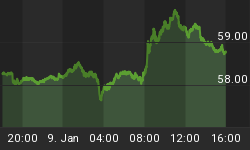Money can't be this cheap forever. In other words, one of the most likely scenarios the US economy faces is rising interest rates. The current low-interest-rate climate is simply unsustainable. At some point-as it always does-the trend will turn around. We want to be prepared for that turn, and the right floating-rate fund can help.
A floating-rate loan is a bank loan with interest that's tied to some benchmark rate, often the London Interbank Offer Rate (LIBOR). When the LIBOR changes, so does the loan's coupon. The rate is adjusted every 30-90 days. Floating-rate funds are pools of capital that invest in these loans, earn variable-rate interest, and pay dividends that are themselves flexible.
Variable Dividends Boost Immunity
Variable dividends are the key feature of floating-rate funds. They're what separate floating-rate funds from the rest of the debt market. Flexible dividends make shares of the bond funds immune to rising interest rates; the prices of the bonds and the fund's shares don't get punished when rates go up. What the investor sees is higher dividends; his principal is safe.
A note of caution is in order here: Even though floating-rate bonds don't have the same inverse price-yield relationship as fixed-rate debt instruments, their prices can still go down. Although the automatic coupon adjustments mostly eliminate the first major risk of any debt instrument-interest-rate risk-floating-rate funds still hold the other major risk: credit risk. As a reminder, credit risk is the risk that the borrower won't make payments on time or will default on the debt entirely.
The credit risk of floating-rate loans is high because the companies that borrow under these conditions are usually rated below investment grade. They can't go to capital markets for money because fixed-rate loans would be too expensive, so they turn to banks that provide funds on floating-rate terms.
Since the companies borrowing these funds are below investment grade, their default rates are close to those of speculative-grade bonds. Vanguard Research reports that the average annual default rate from 1996 to 2012 for speculative-grade bonds was 4.5%; for senior floating-rate loans, it was 3.4%. Better, but still much higher than investment-grade bonds at 0.1%.
High Post-Default Recovery Rates
Does this mean that you should avoid floating-rate loans in favor of AAA-rated debt? No. First, floating-rate loans are high in a companies' debt structure, which means that if the borrower defaults, investors holding floating-rate debt have a priority claim on the company's assets. This leads to very high recovery rates for senior floating-rate loans in the event of default: 71.1%, or more than 70 cents on the dollar. Compare that to the next class of loans, senior secured, which are recovered at a rate of 56.8%.
Second, floating-rate loans outperform both high-yield loans and the aggregate US bond market. According to Vanguard, during the last three rising-rate periods (January 1994-February 1995, June 1999-May 2000, and June 2004-June 2006) floating-rate bonds outperformed high-yield instruments by 2.5 percentage points (pp) and the aggregate bond market by 4.3 pp.
After the rising-rate periods end, however, floating-rate funds tend to underperform both high-yield instruments and the overall bond market. This is why we're buying them now, when rates have nowhere to go but up. We don't know when that will happen, but when it does, we want to be positioned to profit.
In addition to their excellent performance in rising-interest-rate periods, floating-rate funds are good for diversification. Their correlation with the overall US bond market is close to zero, which makes them especially good for a portfolio focused on fixed-rate US bonds. However, they also belong in our retirement portfolio-the Money Forever portfolio-where we use them to diversify our allocation across various debt instruments and to make sure we are well positioned to profit from rising interest rates.
Entree into the World of Big Money
To sum it up, floating-rate funds provide a way to diversify into an investment class that is almost immune to rising interest rates. Like business development companies, floating-rate funds offer retail investors entree into an area of finance usually reserved for big money and institutions. In exchange for these opportunities, investors accept credit risk due to the low credit ratings of the borrowing companies. With that in mind, we pay close attention to the sectors of the funds we consider investing in, and prefer more defensive and crisis-resistant industries.
At Miller's Money we closely monitor the bond market, constantly scouting out the best options for seniors and savers. Learn more need-to-know information about bonds and the role they play in today's low-interest rate environment by downloading our free special report, Bond Basics today.
The article Floating-Rate Funds Poised to Profit as Interest Rates Rise was originally published at millersmoney.com















